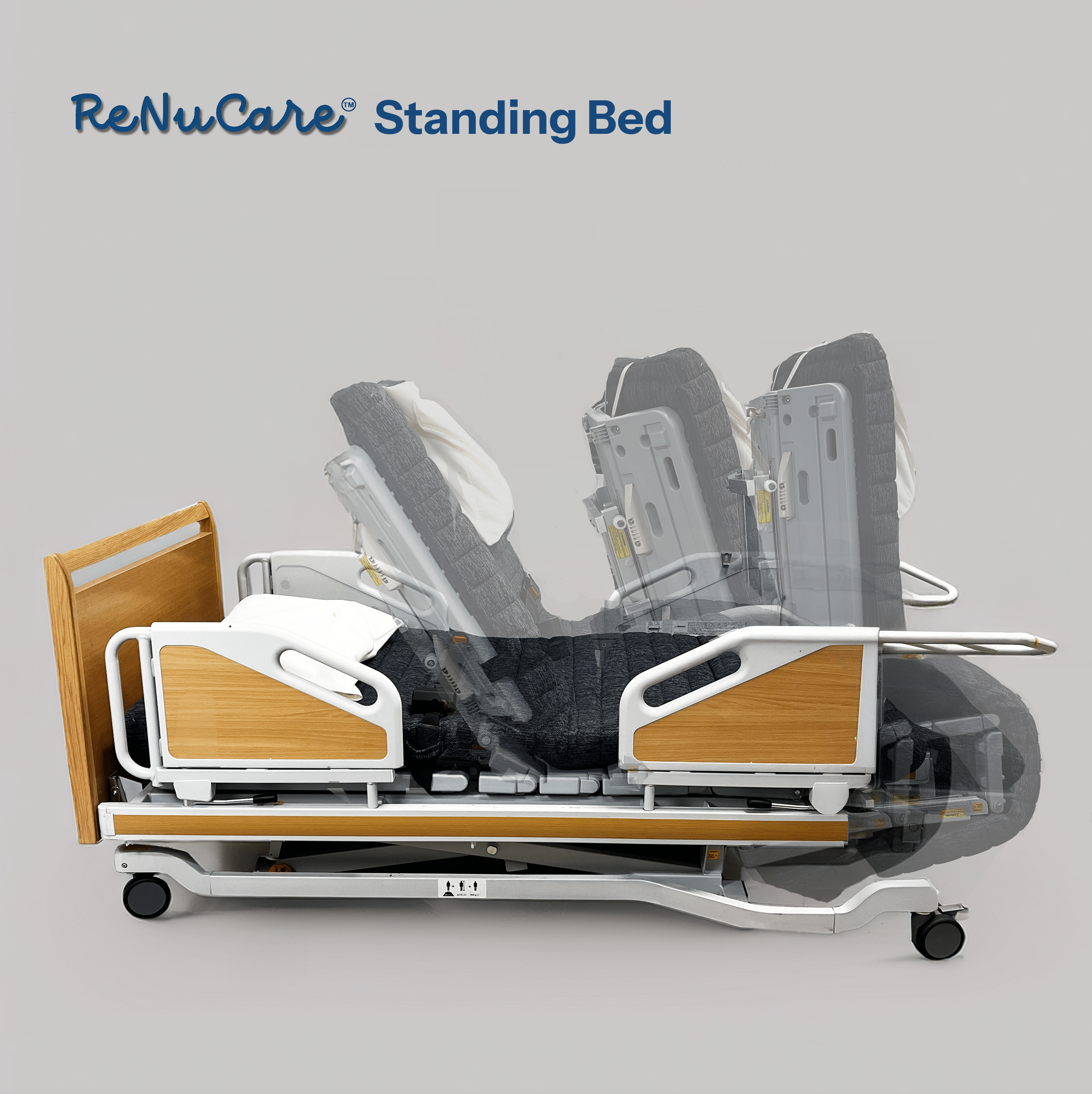
Standing Bed vs. Adjustable Bed: Which One Is Right for You?
When it comes to comfort, mobility, and independence, the bed you choose can make a world of difference. For many people, the right bed is more than just a place to sleep. It can improve health, ease pain, simplify daily routines, and restore a sense of freedom at home. The right choice can also reduce the strain on caregivers and bring peace of mind to families.
Adjustable beds have long been a popular option for their flexibility and comfort, especially for people who enjoy sitting up to read, watch TV, or relieve pressure while sleeping. However, while they enhance relaxation, they often fall short when it comes to supporting safe mobility or providing the level of assistance needed for those with limited movement.
That’s where the standing bed comes in. A newer innovation in home healthcare, standing beds go beyond comfort by actively promoting independence. They support users in safely moving from lying down to standing up, making transfers easier, safer, and more dignified. This not only helps individuals regain confidence in their daily routines but also significantly reduces the physical demands placed on caregivers.
So which option is best for you or your loved one? Let’s break it down.


What Is an Adjustable Bed?
An adjustable bed is designed to let you raise or lower the head and foot of the mattress, giving you the freedom to create a sleeping or resting position that feels just right. This level of flexibility can make a noticeable difference in everyday comfort. By redistributing body weight and reducing pressure on sensitive areas, adjustable beds help relieve tension in the back, hips, and shoulders. They also encourage better circulation, which can be especially beneficial for people who spend long hours in bed or have limited mobility. Proper positioning supports spinal alignment and can ease the discomfort of conditions such as sciatica, arthritis, or chronic back pain.
Adjustable beds are often recommended for people with sleep-related challenges such as sleep apnea or acid reflux, since elevating the head can open airways, reduce snoring, and minimize nighttime reflux. For others, raising the legs can help reduce swelling, improve blood flow, and relieve strain on the lower body. Beyond health benefits, adjustable beds also offer lifestyle convenience. Whether you want to read, watch TV, or work on a laptop, you can adjust the bed to sit upright without stacking pillows or straining your neck. This combination of comfort, support, and practicality is what makes adjustable beds a popular choice for both health management and everyday relaxation.
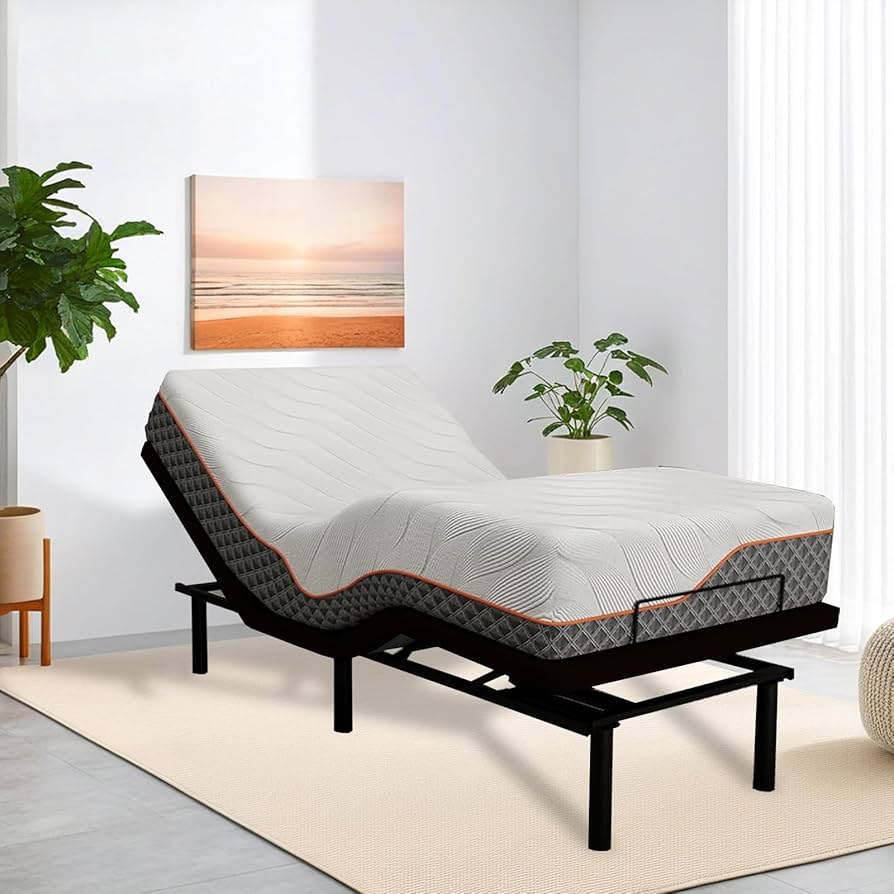
Key Benefits of Adjustable Beds:
- Versatile for both relaxation and everyday activities
- Multiple reclining positions to suit different needs
- Greater comfort for sleeping, reading, or watching TV
- Potential relief from snoring and acid reflux
- Enhanced circulation and reduced pressure points
- Support for pain management and joint discomfort
- Widely available in a range of styles and price points
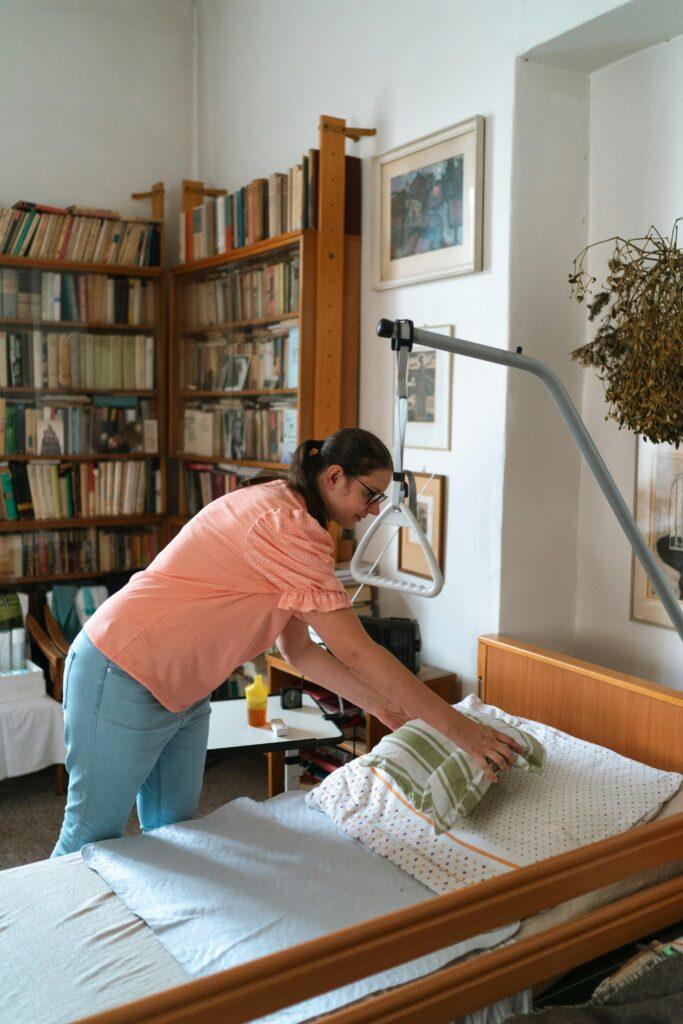
What Is a Standing Bed?
Unlike an adjustable bed that only shifts your position while lying down, a standing bed can help you go from lying flat to sitting upright and even to a near-standing position. This unique function makes it more than just a bed—it becomes a true mobility solution.
For seniors or individuals with limited mobility, a standing bed provides a safe, supportive, and controlled way to get in and out of bed with less reliance on others. It restores independence and dignity by allowing users to perform daily routines with greater ease. For caregivers, it significantly reduces the physical strain of lifting, bending, or repositioning, lowering the risk of injury and making care more sustainable over time.
Beyond mobility, standing beds improve overall well-being. The upright and standing positions help encourage healthy circulation, relieve pressure on joints, and support muscle activity, which can prevent stiffness and discomfort. These features also make everyday tasks like eating, dressing, or transferring to a wheelchair easier, safer, and less stressful. For many, the standing bed becomes not just a piece of furniture but a tool that enhances quality of life, promoting comfort, confidence, and independence every day.
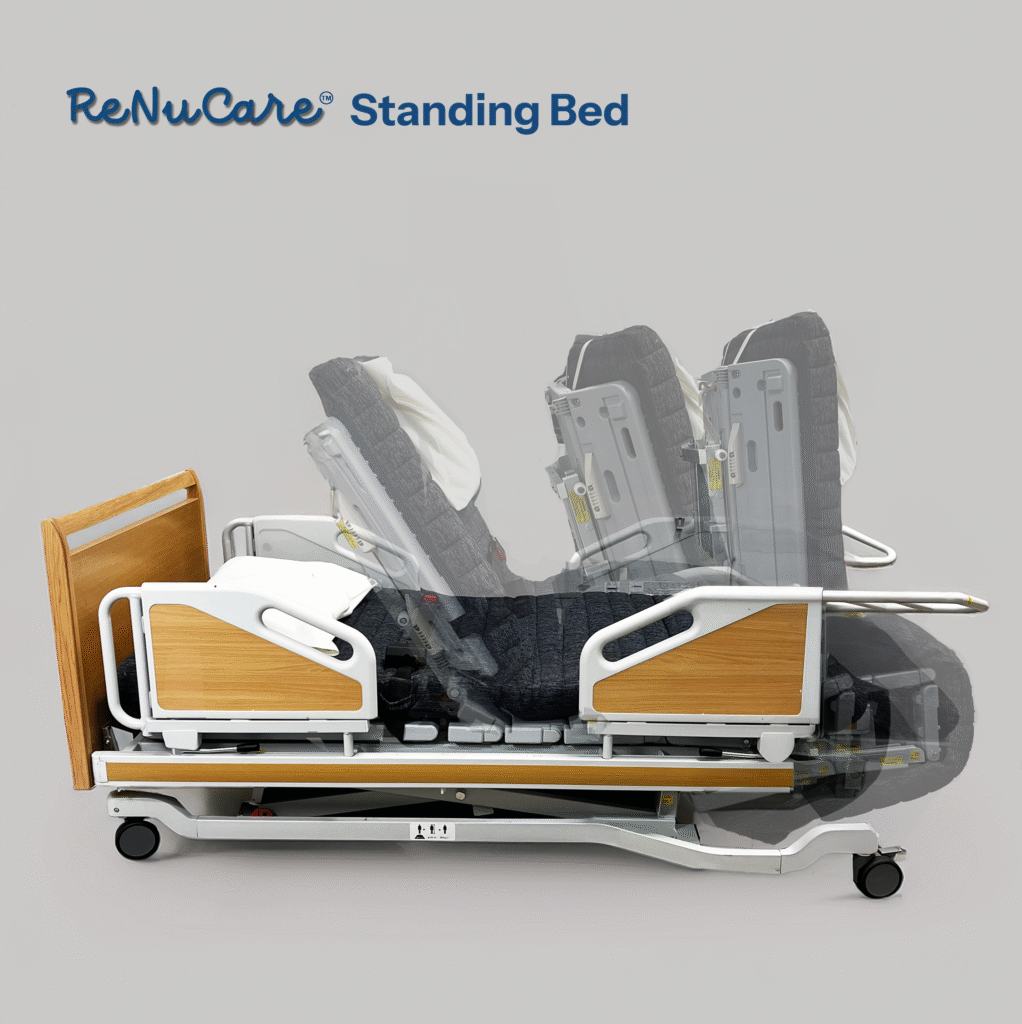
Key Benefits of Standing Beds (with the ReNuCare Standing Bed)
- Full range of motion – The Renucare Standing Bed transitions smoothly from lying down to sitting and then to a near-standing position, something traditional adjustable beds cannot achieve.
- Greater independence – Renucare allows users to get in and out of bed with minimal assistance, supporting dignity and confidence.
- Caregiver support – Designed with caregivers in mind, Renucare reduces the physical strain of lifting or repositioning.
- Improved circulation and reduced pressure sores – Frequent posture changes promote blood flow and prevent prolonged pressure on sensitive areas.
- Pain relief and joint support – Movement between lying, sitting, and standing helps ease stiffness and reduce joint discomfort.
- Promotes recovery and rehabilitation – Beneficial for individuals recovering from surgery, illness, or injury by encouraging safe mobility with support.
- Versatility for daily activities – Eating, dressing, or transferring to a wheelchair becomes safer and more manageable.
Built for long-term use – Engineered for both home and medical environments, Renucare is a lasting investment in independence and quality of life.
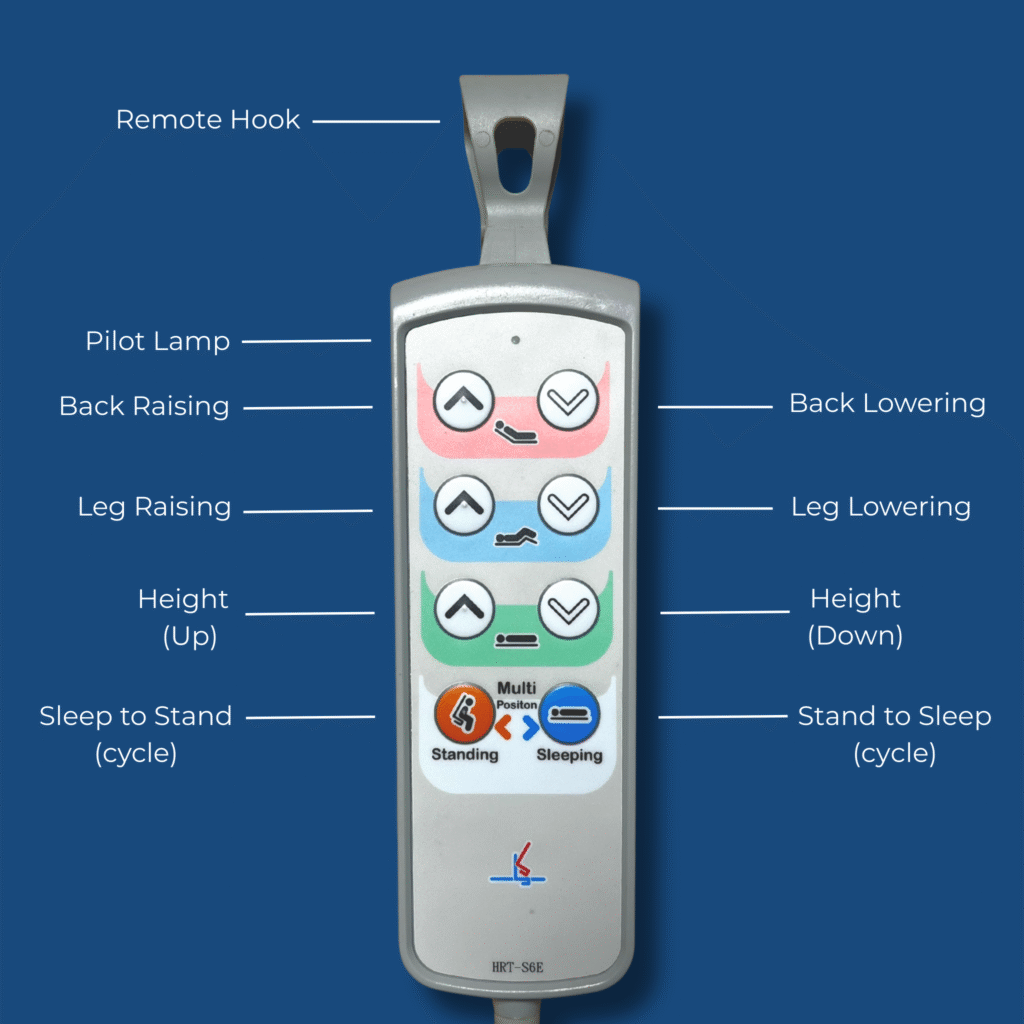
Standing Bed vs. Adjustable Bed: The Main Differences
| Feature | Adjustable Bed | Standing Bed |
| Range of Motion | Reclines head and legs | Reclines, sits up, and transitions to standing |
| Independence | Provides comfort but may still require help | Enables users to get in and out of bed independently |
| Best For | Comfort, sleep quality, mild mobility needs | Mobility assistance, caregiving, rehabilitation |
| Caregiver Support | Some lifting may be required | Greatly reduces caregiver strain |
| Price Range | Typically lower | Higher, but includes mobility and independence support |

Which Bed Is Right for You?
If your main goal is better comfort while sleeping, reading, or relaxing, an adjustable bed may be the right fit. It provides ergonomic support, customizable positions, and is widely available for everyday home use. Adjustable beds can help relieve pressure points, improve sleep quality, and offer a comfortable solution for people with back discomfort or mild mobility limitations. They are also versatile for daily activities such as reading, watching TV, or working on a laptop from bed.
If your priority is greater independence, mobility support, and caregiver relief, a standing bed such as the Renucare Standing Bed may be the better long-term option. Standing beds go beyond comfort by supporting safe transitions from lying down to sitting and even to a near-standing position. This can reduce the risk of falls, support rehabilitation, and make daily routines easier and safer for individuals with limited mobility. Caregivers also benefit from reduced physical strain and a safer, more manageable way to assist their loved ones.
In short, adjustable beds focus on enhancing comfort and relaxation, while standing beds focus on improving mobility, independence, and safety.

Conclusion
Choosing the right bed is about more than just comfort—it can have a meaningful impact on daily life, health, and independence. Adjustable beds provide a reliable and accessible way to improve sleep quality, relieve pressure points, and enjoy a more ergonomic resting position for reading, watching TV, or relaxing. They are an excellent choice for individuals seeking comfort and versatility in their home environment. Standing beds, such as the Renucare Standing Bed, take this a step further by addressing mobility challenges and promoting independence. They allow users to safely transition from lying down to sitting and even to a near-standing position, supporting rehabilitation, improving circulation, and reducing strain on caregivers. Ultimately, the decision comes down to personal needs and priorities—whether comfort and relaxation are most important, or whether mobility, safety, and independence are key considerations. Both options offer unique benefits, and understanding these differences can help you or your loved one make a choice that enhances daily life, supports well-being, and provides lasting value for years to come.
References
8 Benefits of an Adjustable Bed.” Sleep Junkie https://www.sleepjunkie.com/adjustable-bed-benefits/.
This article outlines eight key benefits of adjustable beds, including improved comfort, circulation, and pain management.
“Why Doctors Recommend Adjustable Beds for Seniors: Expert Guide.” SeniorSite, https://seniorsite.org/resource/why-doctors-recommend-adjustable-beds-for-seniors-expert-guide/.
Provides clinical data and documented health improvements explaining consistent medical recommendations for adjustable beds for seniors.SeniorSite+1
“Tips for Managing Chronic Pain with an Adjustable Bed.” Beds for Healing, https://bedsforhealing.com/tips-for-managing-chronic-pain-with-an-adjustable-bed/.
Discusses how adjustable beds can help alleviate chronic pain by offering customizable support and comfort.bedsforhealing.com
“ReNuCare Sit-to-Stand Home Medical Hospital Standing Bed.” Keyway Medical, https://keywaymedical.com/product/renucare-standing-bed/.
Highlights the features of the ReNuCare Standing Bed, emphasizing its ability to support safe transitions from lying down to standing.
“Benefits of a Rotating Sleep to Stand Chair Bed.” SlumberSource, https://slumbersource.com/blogs/blog/benefits-of-a-rotating-sleep-to-stand-chair-bed.
Explores the advantages of rotating sleep-to-stand chair beds, including improved mobility and ease of use for both patients and caregivers.
“Sleep-to-Stand Beds: The Best Mobility Solution for Seniors.” Mobility Ultra, https://mobilityultra.com/blogs/beds/sleep-to-stand-beds-mobility-comfort.
Discusses how sleep-to-stand beds enhance mobility, safety, and comfort for seniors and individuals with mobility challenges.Mobility Ultra
“Caregiver’s Guide to Safe Bed Transfers at Home: Using the ReNuCare Standing Bed to Support Independence and Safety.” Keyway Medical, https://keywaymedical.com/caregivers-guide-to-safe-bed-transfers-at-home-using-the-renucare-standing-bed-to-support-independence-and-safety/.
Provides guidance on using the ReNuCare Standing Bed to facilitate safe and dignified bed transfers, benefiting both users and caregivers.Key Way Medical


